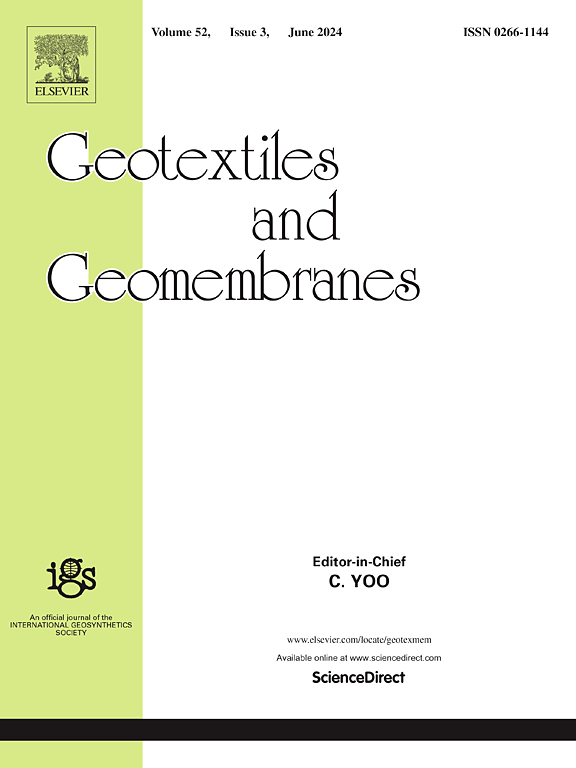Influence of initial water content and voltage gradient on electroosmotic dewatering of ultra-fine soils using novel electrokinetic geosynthetics
IF 6.2
1区 工程技术
Q1 ENGINEERING, GEOLOGICAL
引用次数: 0
Abstract
Electroosmotic (EO) dewatering has gained substantial attention as an alternative method for improving weak soil deposits. One aspect that has not received sufficient attention in this approach is the influence of initial water content and voltage gradient on the EO treatment. This study aimed to provide a comprehensive understanding of the key operational parameters and post-dewatering performance metrics of EO treatment with varying initial water contents and voltage gradients. A number of electrical, hydraulic and soil water retention parameters were monitored during the treatment process, and the material response to the EO treatment was evaluated by assessing various geotechnical and physiochemical parameters. The results indicate that, regardless of the voltage gradients, overall, the EO dewatering led to a reduction of at least one-third of the original water content. The EO treatment resulted in a sevenfold, ninefold and twentyfold relative increase in undrained shear strength for the experiments with the lowest, intermediate and highest initial water contents, respectively, indicating an exponential increase as the initial water content of the slurry increases. The implications of the findings to improve the viability of EO treatment for large-scale applications using electrokinetic geosynthetics are also discussed.
初始含水量和电压梯度对新型电动土工合成材料超细土电渗透脱水的影响
电渗透(EO)脱水作为一种改善软弱土壤沉积物的替代方法受到了广泛的关注。在这种方法中没有得到足够重视的一个方面是初始含水量和电压梯度对EO处理的影响。本研究旨在全面了解不同初始含水量和电压梯度下EO处理的关键操作参数和脱水后性能指标。在处理过程中监测了许多电气、水力和土壤保水参数,并通过评估各种岩土和物理化学参数来评估材料对EO处理的响应。结果表明,无论电压梯度如何,总体而言,EO脱水导致原始含水量至少减少三分之一。在初始含水量最低、中等和最高的试验中,EO处理导致不排水抗剪强度分别相对提高了7倍、9倍和20倍,表明随着浆体初始含水量的增加,不排水抗剪强度呈指数增长。本文还讨论了这些发现对提高电动土工合成材料大规模应用的EO处理可行性的意义。
本文章由计算机程序翻译,如有差异,请以英文原文为准。
求助全文
约1分钟内获得全文
求助全文
来源期刊

Geotextiles and Geomembranes
地学-地球科学综合
CiteScore
9.50
自引率
21.20%
发文量
111
审稿时长
59 days
期刊介绍:
The range of products and their applications has expanded rapidly over the last decade with geotextiles and geomembranes being specified world wide. This rapid growth is paralleled by a virtual explosion of technology. Current reference books and even manufacturers' sponsored publications tend to date very quickly and the need for a vehicle to bring together and discuss the growing body of technology now available has become evident.
Geotextiles and Geomembranes fills this need and provides a forum for the dissemination of information amongst research workers, designers, users and manufacturers. By providing a growing fund of information the journal increases general awareness, prompts further research and assists in the establishment of international codes and regulations.
 求助内容:
求助内容: 应助结果提醒方式:
应助结果提醒方式:


